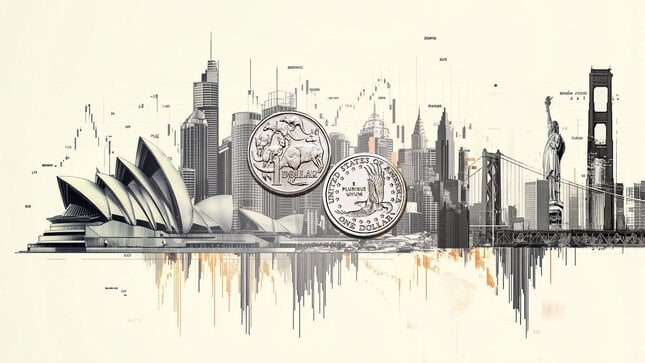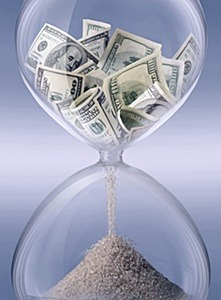Our last Options article was about the component of an option’s price called “time value,” also known as “extrinsic value”. This is the most interesting aspect of put and call options, and we’ll expand on it today.
The value of an option is made up of just two components. Extrinsic or time value is one of the two; the other being Intrinsic value. Let’s dispose of intrinsic value first.
Intrinsic value is the amount of positive cash flow that could be generated, if any, by exercising an option, and then immediately liquidating the resulting stock position at the current market price. Here are examples of intrinsic value for options on a hypothetical stock that is currently selling for $80:
-
A call option at the $75 strike. That $75 strike price is a $5 discount compared to today’s $80 market value. If I exercised the call, hypothetically, I could buy the stock for $75. Since I can sell it for $80, I could generate $5 in net positive cash flow. Notice that I said “cash flow,” not “profit”. Whether that $5 cash flow represents a profit depends on how much I originally paid for the option. But that $5 of hypothetical positive cash flow is today’s intrinsic value of that call option, regardless of my original cost. There is a term for an option that has intrinsic value. The option is said to be “in the money”. This option would be in the money by $5.
-
A call option at the $85 strike for that same $80 stock. Exercising that call would allow me to buy the stock for $85. Since I can only sell the stock for $80 today, exercising that option would generate negative cash flow (buy it for $85, sell it for $80), which makes no sense. Exercise of an option that you own is never required, and no one would exercise one like this today. This option has no positive cash flow at today’s $80 stock price, so it has no intrinsic value, and will have none unless the stock goes above $85. With no intrinsic value, this option is “out of the money”.
-
A put option at the $82 strike for our $80 stock. Exercising that put option would allow me to sell the stock for $82. I could buy the stock in the market for $80; then exercise the option and sell the stock for $82. Buy it for $80, sell it for $82, for a $2 net positive cash flow. That put has $2 of intrinsic value. Having intrinsic value, this option is in the money.
-
Finally, a put option at the $78 strike for our $80 stock. Exercising that option would allow me to sell the stock for $78. But without the put I could have sold it for more ($80), so I would never exercise that put at today’s prices. The put has no intrinsic value, and will not have any unless the stock drops below $78. Until then, this option is out of the money.
So, there is a simple formula for intrinsic value: for calls, it’s the current stock price minus the strike price, if that difference is a positive number. For puts, it’s the reverse – the strike price minus the current stock price (also if that difference is a positive number).
Since the strike price of any individual option is fixed, its intrinsic value changes as the stock price moves. The difference between the strike price (fixed) and the stock price (variable) changes when the stock price changes.
If intrinsic value was all there was to options, there would be no point to them. But it isn’t.
That’s because it is possible that the intrinsic value in any option could increase in the future. That will happen if the stock price changes in the right direction, and before the option expires.
For that reason people pay more for the option than just its present intrinsic value. They also pay for the possibility of an increase in that intrinsic value. The amount that they pay beyond the intrinsic value is the extrinsic value or time value.
The more change there could be in the stock price in the time before expiration, the more intrinsic value the option might acquire in the future; and therefore the higher its time value will be now.
The key to time value is “the more change there could be in the stock price in the time before expiration…”
How can anyone know how much change in the stock price there could be?
The answer, of course, is that no one can know that for sure. The best anyone could possibly do is to make an educated guess based on how fast that stock has moved in the past, and how long it now has to make its move.
There is an accepted formula for making that guess called the option pricing model. It takes into account a stock’s past rate of price change (called historical volatility); how long the option has until expiration; and how far away from the current stock price an option’s strike is. Given these, the amount of time value an option should theoretically have can be calculated.
That is the starting point for the option’s time value, but not necessarily the ending point. The rest is governed by the market’s expectations as to how fast the stock will move in the future. If they collectively think it will move faster than in the past, they will pay more for its time value and vice versa.
The key to successful option trading is understanding the three main forces that change time value – stock price, time passing, and market expectations – and positioning yourself to benefit from them. This is taught in Online Trading Academy’s Professional Option’s Trader course and Extended Learning Track. Contact your local center for more information.
This content is intended to provide educational information only. This information should not be construed as individual or customized legal, tax, financial or investment services. As each individual's situation is unique, a qualified professional should be consulted before making legal, tax, financial and investment decisions. The educational information provided in this article does not comprise any course or a part of any course that may be used as an educational credit for any certification purpose and will not prepare any User to be accredited for any licenses in any industry and will not prepare any User to get a job. Reproduced by permission from OTAcademy.com click here for Terms of Use: https://www.otacademy.com/about/terms
Editors’ Picks

AUD/USD falls toward 0.6600 amid risk aversion
AUD/USD drops toward 0.6600 in Asian trading on Tuesday, as recent mixed Australian labour market data and renewed concerns about the health of the Chinese economy undermine the Aussie amid a softer risk tone and a pause in the US Dollar decline. Traders now look to the delayed US NFP report for some impetus.

USD/JPY stays in the red below 155.00 amid BoJ rate hike bets, US data awaited
USD/JPY holds moderate losses below 155.00 in the Asian session on Tuesday. The Japanese Yen gains ground on expectations that the Bank of Japan will raise interest rates at the upcoming policy meeting on Friday. Traders will closely monitor key US data, including Nonfarm Payrolls, Retail Sales, and Purchasing Managers Index, which are due later in the day.

Gold defends $4,300 as focus shifts to US NFP, PMI data
Gold price holds the $4,300 level, easing from the highest since October 21 in the Asian trading hours on Tuesday. The precious metal stays afloat on further US Federal Reserve rate cut bets. The US Nonfarm Payrolls report will take center stage later on Tuesday. Also, the US Retail Sales and Purchasing Managers Index will be published.

Top Crypto Losers: Aster, Midnight, and Ethena extend losses as selling pressure mounts
Aster, Midnight, and Ethena are the altcoins with the most losses over the last 24 hours, as the broader cryptocurrency market weakens amid Bitcoin dropping below $86,000.

NFP preview: Complex data release will determine if Fed was right to cut rates
The long wait is over, and the Bureau of Labor Statistics in the US will release nonfarm payrolls reports for both November and October at 1330 GMT on Tuesday. The overall NFP figure for October is expected to be -10k, however, it is expected to be influenced by a massive 130k drop in federal department workers.
RECOMMENDED LESSONS
Making money in forex is easy if you know how the bankers trade!
I’m often mystified in my educational forex articles why so many traders struggle to make consistent money out of forex trading. The answer has more to do with what they don’t know than what they do know. After working in investment banks for 20 years many of which were as a Chief trader its second knowledge how to extract cash out of the market.
5 Forex News Events You Need To Know
In the fast moving world of currency markets where huge moves can seemingly come from nowhere, it is extremely important for new traders to learn about the various economic indicators and forex news events and releases that shape the markets. Indeed, quickly getting a handle on which data to look out for, what it means, and how to trade it can see new traders quickly become far more profitable and sets up the road to long term success.
Top 10 Chart Patterns Every Trader Should Know
Chart patterns are one of the most effective trading tools for a trader. They are pure price-action, and form on the basis of underlying buying and selling pressure. Chart patterns have a proven track-record, and traders use them to identify continuation or reversal signals, to open positions and identify price targets.
7 Ways to Avoid Forex Scams
The forex industry is recently seeing more and more scams. Here are 7 ways to avoid losing your money in such scams: Forex scams are becoming frequent. Michael Greenberg reports on luxurious expenses, including a submarine bought from the money taken from forex traders. Here’s another report of a forex fraud. So, how can we avoid falling in such forex scams?
What Are the 10 Fatal Mistakes Traders Make
Trading is exciting. Trading is hard. Trading is extremely hard. Some say that it takes more than 10,000 hours to master. Others believe that trading is the way to quick riches. They might be both wrong. What is important to know that no matter how experienced you are, mistakes will be part of the trading process.
The challenge: Timing the market and trader psychology
Successful trading often comes down to timing – entering and exiting trades at the right moments. Yet timing the market is notoriously difficult, largely because human psychology can derail even the best plans. Two powerful emotions in particular – fear and greed – tend to drive trading decisions off course.


